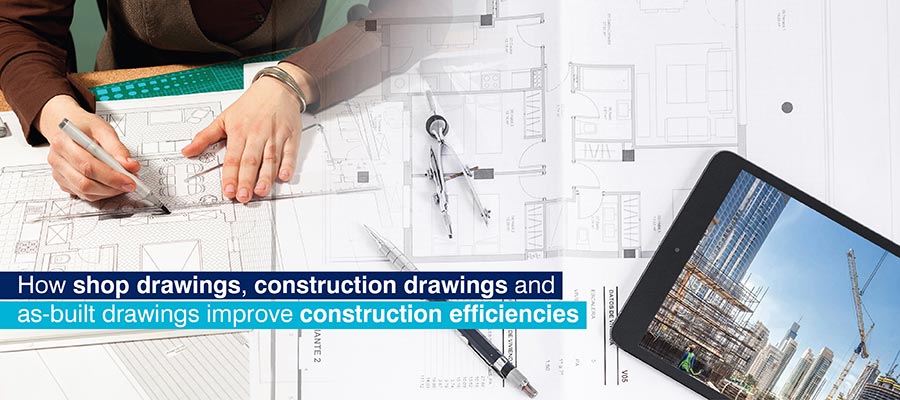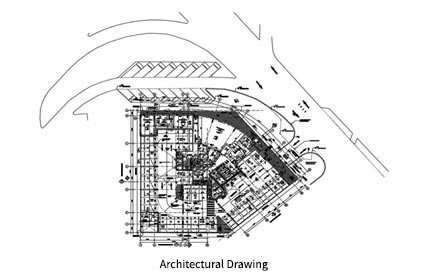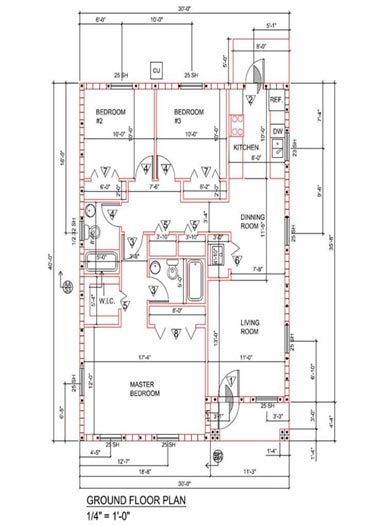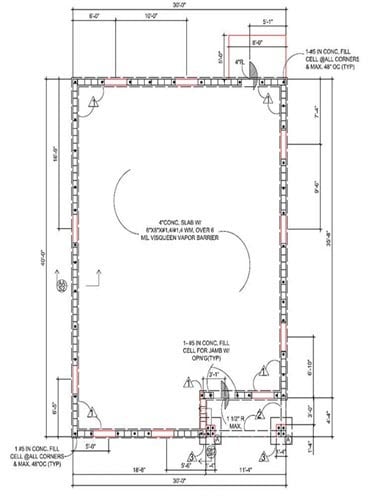
From project approval to onsite work, every stage of construction is guided by different types of drawings. A comprehensive understanding of shop drawings, construction drawings and as-built drawings will help you execute projects better and increase construction efficiency.
Project drawings break down the designs of complex construction into executable parts according to needs and application. While there are many categories of project drawings, shop drawings, construction drawings and as-built drawings are what we encounter on a daily basis.
Field personnel can often become confused if they do not understand which type of drawing is applicable where, as these do not carry the same information or perspectives. It is impractical to create a single 2D drawing carrying all information and catering to every need of construction work. Detailed drawings are also necessary for code compliance, zoning needs, authority approval, and as part of service contracts.
Thus, architects and engineering consultants use multiple categories of drawings in a building project. With the need for such detailed and special project drawings growing every day, the global market for drafting services has already crossed $5 billion. Project drawings in 2D for various disciplines can be categorized as architectural drawings, structural drawings and MEPF drawings.
The following article helps understand what construction drawings, shop drawings, and as-built drawings are, and what is included in each.
Table of Content

A construction drawing, also called a building plan, is a part of the preconstruction stage and serves as a crucial deliverable to begin a construction project. They are prepared by architects to represent architectural elements and specifications before onsite work begins. Some construction drawings are also called “Issued for Construction (IFC)” drawings. These are approved drawings and used for actual construction purposes. Construction documents are prepared by architects or designers before the bidding process and serve as official contract deliverables.
Get 98.5% error-free construction documents with a quick TAT of 4 weeks
LEARN HOW »
Don’t have the time to read the entire article right now?
That’s Ok. Let us send you a copy so you can read it whenever you want to. Tell us where to send it.
Construction drawings are used for tender, for a contract between contractors and owners, or actual construction. Construction drawings need to be easy and clear for reading purposes, as any misunderstanding can lead to delays or errors. Construction documents are enriched by specification documents that include standards, techniques, and materials that need to have adhered to for site construction.
Construction drawings also include data from other trades including structural engineers, HVAC specialists, electrical and plumbing engineers, and fire safety professionals. The level of information and external inputs would depend on the project scale. A set of construction drawings includes:
Some common types of construction drawings are:

Floor Plan Construction Drawing
Elevation Construction Drawing
Sectional Construction Drawing
Detail Drawings
Detail drawings are created on a 1:20 or 1:10 scale based on the project size and information contained within the drawings. Detail drawings demonstrate:

Construction drawings help architects and architectural firms during the approval process, bidding process and handover to contractors. They help to:
Shop drawings are important for manufacturers or fabricators to represent design intent with detailed plans. They help in the fabrication process by providing important information including that on manufacturing, assembly, and installation of building components. Shop drawings are produced by the contractors subcontractors, fabricators, or manufacturers.
Reduce production time by 20% with 100% output quality
LEARN MORE »Shop or fabrication drawings are used for prefabrication or onsite installation of components. With shop drawings, fabricators or manufacturers can figure out material types for components and installation dimensions.
Details that need to be included in shop drawings include:
Shop drawings help onsite personnel in accurate and precise installation of building components as well as fabrication. They help in:
An as-built drawing can be a document of a record or a drawing created and delivered by architects, designers, or contractors after project completion. As-built drawings can represent and support thousands of building processes. These drawings can be used to manage the lifecycle of the project after construction is over. As-built drawings are deliverables that simplify comparisons and contrasts between the design and final specifications. They include all the modifications done during the construction project.
As-builts are used for the following purposes:
As-built drawings need to include the following details:
As-built drawings deliver the following benefits for key stakeholders:
Outsourcing drawing services can transform design and construction through cost savings, faster turnaround, and high-quality drawing deliverables. The principal focus of outsourcing your drawing needs is to go asset light while tapping into bigger talent pools, while committing in-house teams to core business activities. Top seven advantages of outsourcing drafting services include:
Construction drawings, shop drawings, and as-built drawings are completely different in their functions but are needed across the design and construction phases. For efficient construction project execution, accurate, complete, and updated drawings are a must. Without these, field personnel cannot carry out error-free installation of construction components within planned timelines. Architectural engineering consultants today, outsource their drawing needs to experienced BIM service providers for better project outcomes.
You may also like
BIM-Based MEP Coordination for Multi-Trade Collaboration
How AI and ML are Shaping the Future of Scan to BIM
Cabinet Shop Drawings: A Detailed Guide